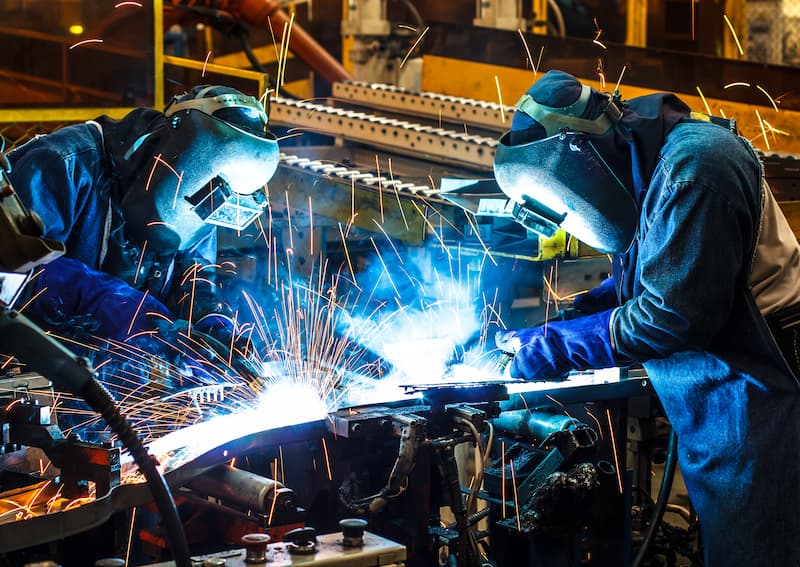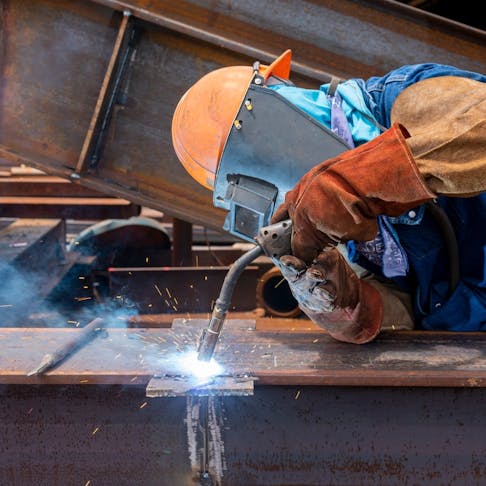Welding WPS Explained: Key Components and Benefits for Your Welding Processes
Welding WPS Explained: Key Components and Benefits for Your Welding Processes
Blog Article
The Ultimate Overview to Welding WPS Procedures: A Comprehensive Summary for Welders
In the detailed world of welding, Welding Treatment Requirements (WPS) serve as the backbone of ensuring high quality, uniformity, and safety in welding procedures. Understanding the subtleties of creating, executing, and keeping an eye on WPS treatments is important for welders aiming to raise their craft and fulfill industry criteria. As we explore the different components of a WPS and discover the details of certification and accreditation, we will certainly uncover the crucial role these treatments play in the world of welding. Allow's start a trip to unravel the complexities and importance of WPS procedures in welding methods.
Relevance of WPS Procedures
Understanding the significance of Welding Procedure Specifications (WPS) treatments is essential for making certain the high quality and honesty of bonded structures. WPS procedures work as a roadmap for welders, detailing the needed steps, specifications, and products required to accomplish a sound weld. By adhering to WPS standards, welders can make sure uniformity in their work, leading to structurally audio and reliable welds.
Among the main reasons why WPS procedures are necessary is their role in preserving weld quality and integrity. Complying with the defined welding parameters and techniques outlined in the WPS assists stop issues such as porosity, fracturing, or incomplete combination, which can endanger the toughness and longevity of the weld. Furthermore, WPS treatments are important for making sure conformity with sector standards and codes. By following established WPS guidelines, welders can show that their work meets the needed demands for safety and quality, providing assurance to clients, inspectors, and regulative bodies. Basically, the value of WPS treatments can not be overemphasized, as they are basic to achieving constant, top notch welds that fulfill sector criteria and specs.

Components of a WPS
A Welding Treatment Specification (WPS) commonly consists of essential components that detail the certain demands for performing a weld, making sure consistency and quality in the welding procedure. The crucial parts of a WPS consist of vital variables such as base steels, filler steels, interpass and preheat temperatures, welding processes, securing gases, welding placements, and post-weld warm treatment demands.
Base metals refer to the materials being joined, while filler metals are made use of to fill the void in between the base steels during welding. Preheat and interpass temperature levels are essential for regulating the heat input and protecting against concerns like splitting or distortion. The welding procedure lays out the specific strategy to be utilized, whether it's gas steel arc welding (GMAW), shielded steel arc welding (SMAW), or an additional approach. Protecting gases protect the weld swimming pool from atmospheric contamination. Welding positions specify the orientations in which welding can be performed. Post-weld warm treatment might be required to eliminate tensions and enhance the weld's buildings. A detailed understanding of these elements is important for producing a extensive and efficient WPS.

Credentials and Qualification
Having developed the vital elements of a Welding Procedure Specification (WPS), the focus currently moves in the direction try this of the vital elements of certification and accreditation in welding practices.

Certification, on the other hand, is the formal recognition of a welder's certifications by an appropriate accreditation body or company. Welding qualifications are typically based upon the certain welding procedures, products, and settings a welder is qualified to function with. Holding a legitimate welding qualification shows that a welder fulfills sector requirements and is qualified to execute welding jobs to the called for requirements.
Developing a WPS
To develop a Welding Treatment Spec (WPS) that meets sector standards, mindful consideration of welding procedures, products, and operational criteria is necessary. The first step in developing a WPS is to identify the welding process to be utilized, such as gas steel arc welding (GMAW) or protected steel arc welding (SMAW)

Executing and Monitoring WPS
Upon finalizing the extensive Welding Procedure Spec (WPS) that diligently information welding procedures, products, operational specifications, and top quality guarantee procedures, the focus changes to effectively implementing and keeping an Get More Info eye on the recognized treatments. Implementation entails making certain that all welders included in the job know with the WPS and follow it meticulously throughout the welding procedure. This needs giving ample training and supervision to ensure adherence her comment is here to the defined treatments. Checking the WPS involves continual oversight to confirm that welding tasks align with the recorded requirements. Inspections, screening, and top quality control steps are crucial parts of the tracking procedure to recognize any discrepancies or issues quickly. Routine audits and reviews of the welding treatments help in maintaining consistency and high quality throughout the task. Efficient application and tracking of the WPS are critical for guaranteeing the stability, stamina, and security of the welded joints, inevitably adding to the total success of the welding job.
Conclusion
To conclude, understanding and complying with Welding Treatment Specs (WPS) is essential for welders to ensure quality, consistency, and safety in their job. By understanding the components of a WPS, getting correct certifications and certifications, producing thorough treatments, and carrying out and monitoring them effectively, welders can improve their skills and proficiency in welding practices. Sticking to WPS treatments is necessary for creating high-grade welds and meeting market criteria.
In the detailed world of welding, Welding Treatment Specs (WPS) serve as the foundation of making sure quality, consistency, and security in welding operations. The welding process outlines the certain method to be used, whether it's gas metal arc welding (GMAW), secured metal arc welding (SMAW), or another technique.To create a Welding Treatment Requirements (WPS) that fulfills sector requirements, careful consideration of welding processes, products, and functional criteria is vital. The very first step in creating a WPS is to recognize the welding procedure to be made use of, such as gas metal arc welding (GMAW) or protected steel arc welding (SMAW)Upon completing the comprehensive Welding Treatment Spec (WPS) that carefully details welding processes, materials, operational specifications, and quality guarantee actions, the emphasis changes to efficiently carrying out and monitoring the recognized treatments.
Report this page